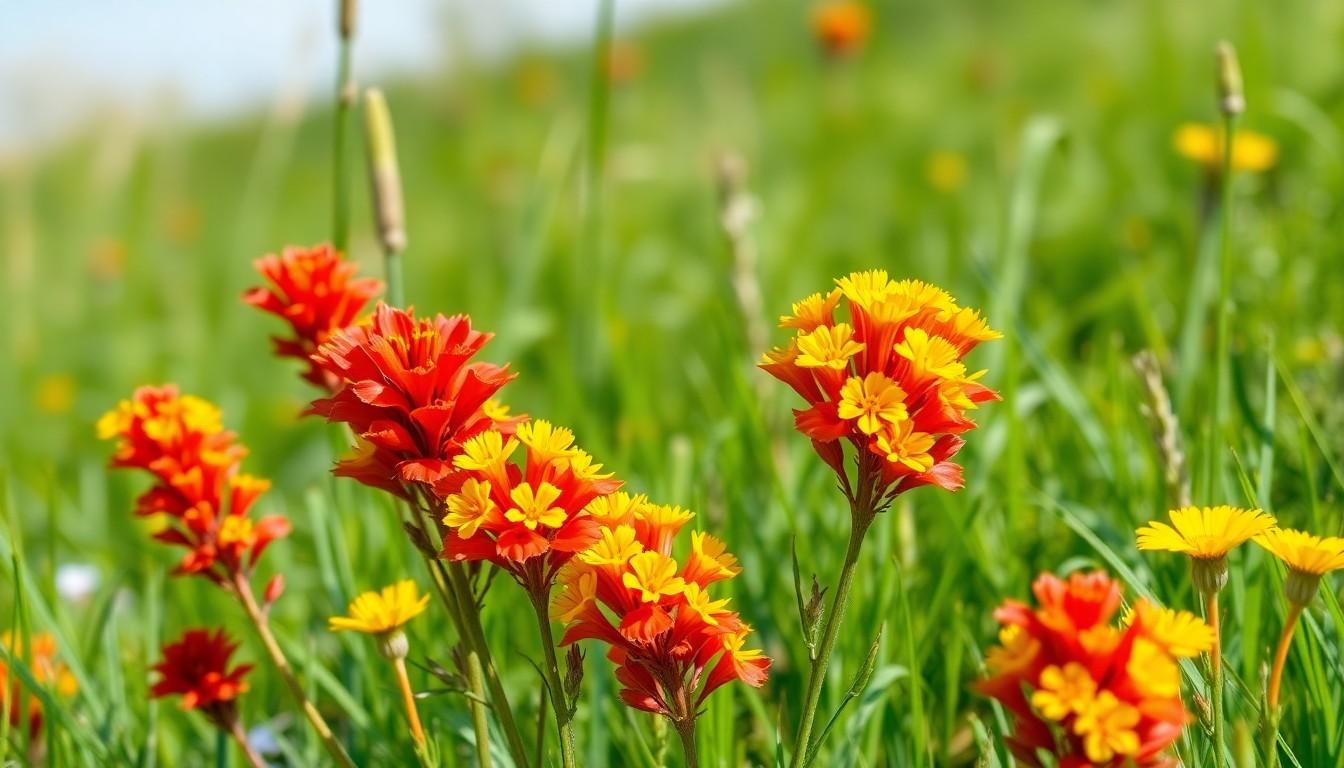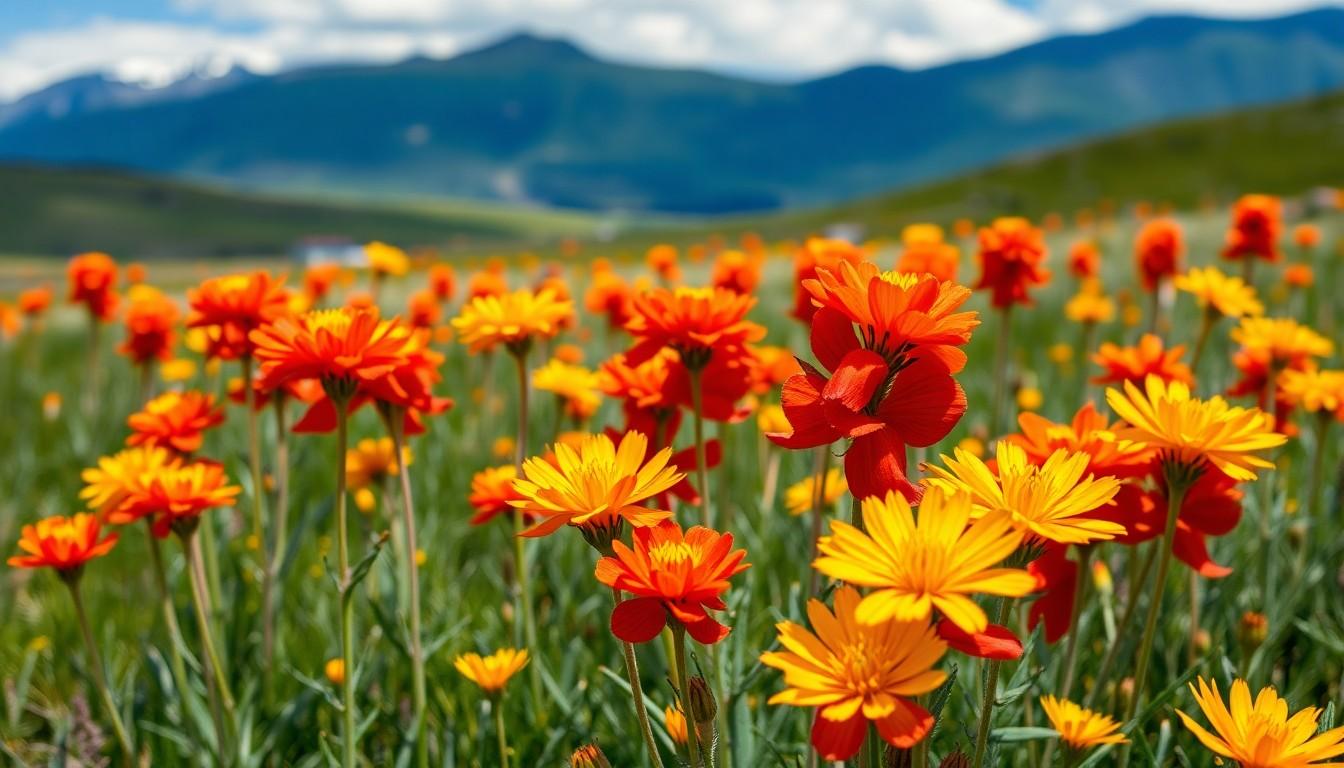Indian paintbrush flowers are nature’s vibrant little masterpieces, splashing color across meadows and mountainsides. With their striking hues ranging from fiery reds to sunny yellows, these wildflowers are like the confetti of the floral world, celebrating the beauty of nature. If you’ve ever wondered what it’s like to stroll through a rainbow, just take a walk where these beauties bloom.
Overview Of Indian Paintbrush Flowers
Indian paintbrush flowers, belonging to the genus Castilleja, thrive in various habitats across North America. These vibrant wildflowers feature clusters of tubular blossoms that can reach heights of 30 inches. Colors strongly influence their appeal; shades include fiery red, bright orange, sunny yellow, and even soft pink.
Several species exist, each adapted to specific environments. Castilleja linariifolia, commonly found in the western U.S., prefers open grasslands. At the same time, Castilleja coccinea, native to eastern U.S. regions, often populates wet meadows. Their ability to thrive in diverse conditions showcases their resilience.
Pollinators frequently visit these flowers, drawn by nectar-rich blooms. Bees, hummingbirds, and butterflies contribute to their reproduction. Such interactions highlight the ecological significance of these plants in supporting local wildlife.
Cultivating Indian paintbrush flowers in gardens requires careful planning. They thrive in well-drained soil and benefit from full sun exposure. Gardeners often choose to plant them alongside compatible species, promoting a vibrant display.
In addition to their beauty, these flowers have cultural significance. Various Indigenous peoples have used Indian paintbrush flowers in traditional art and medicine. Their vibrant colors often symbolize themes of resilience and vitality, reinforcing their importance in both nature and culture.
Exploring areas with abundant Indian paintbrush flowers offers a captivating experience. Walking among these colorful blooms allows individuals to truly appreciate the wonders of nature.
Characteristics Of Indian Paintbrush Flowers

Indian paintbrush flowers exhibit remarkable features that make them distinct in the wildflower community.
Color Varieties
These flowers display an array of vibrant color varieties. Fiery reds, bright oranges, sunny yellows, and soft pinks dominate their hues. Castilleja species can bloom in different shades, with each species showcasing unique colors. For example, Castilleja coccinea typically presents vivid red flowers, while Castilleja linariifolia offers a range of yellows and oranges. The colors can also change depending on soil conditions and surrounding vegetation. This variability enhances their appeal in landscapes and gardens.
Growth Habit and Size
Indian paintbrush flowers grow in a variety of habitats, adapting according to their environment. Heights can range from 12 inches to 30 inches, demonstrating resilience in different conditions. These wildflowers typically form clumps, producing multiple tubular blossoms at the top of each stem. Their growth habit allows them to thrive in open grasslands, rocky outcrops, and moist meadows. In many regions, the plants bloom during late spring to early summer, creating colorful landscapes. Environmental conditions significantly influence their size, shaping how they interact with local flora.
Habitat And Distribution
Indian paintbrush flowers thrive in diverse environments across North America. These wildflowers adapt well, flourishing in various climatic conditions.
Geographical Range
Indian paintbrush flowers are found from Alaska and Canada down to Mexico. Populations span the western U.S., particularly in states like Wyoming, Montana, and Colorado. Additionally, species such as Castilleja coccinea populate eastern regions near wetlands. Each species demonstrates unique distributions, aligning with ecological niches across this vast range.
Preferred Growing Conditions
These colorful blooms prefer well-drained soils and full sun for optimal growth. Indian paintbrush flowers often thrive in meadows, grasslands, and even rocky outcrops. Soil types can vary, but they generally favor slightly acidic to neutral pH. Moisture levels impact flowering; thus, some species resist drought, while others appreciate periodic wetness. Associated vegetation like grasses and shrubs provides shade and resilience, allowing these flowers to flourish in their chosen habitats.
Cultural Significance
Indian paintbrush flowers possess deep cultural roots, particularly among Indigenous peoples in North America. Their vibrant colors express resilience and vitality, making them a prominent symbol in various ceremonies.
Symbolism in Native American Culture
Many Native American tribes view Indian paintbrush flowers as a representation of connection to the earth and nature. The flowers often appear in traditional stories and artworks, marking important events or spiritual beliefs. Bright red hues symbolize strength and courage, while other colors convey different meanings, such as healing or peace. Celebrations frequently incorporate these flowers, emphasizing their role in rituals and communal gatherings.
Use in Traditional Medicine
In traditional medicine, various tribes utilize Indian paintbrush flowers for their healing properties. Specific mixtures often include the leaves or roots, treating ailments ranging from respiratory issues to skin conditions. Moreover, some cultures apply infusion methods to create soothing remedies. Healing practices surrounding these flowers highlight their importance not only as beautiful plants but also as vital components in health and wellness traditions.
Gardening Tips For Indian Paintbrush Flowers
Cultivating Indian paintbrush flowers requires attention to specific environmental needs to ensure flourishing blooms.
Soil Requirements
Focusing on soil is essential for healthy Indian paintbrush plants. Well-drained soil ranks as the top priority. Slightly acidic to neutral pH levels promote optimal growth. Amending heavy clay soils with organic matter enhances drainage and aeration. Finer particles result in water retention, which can rot roots. Incorporating sandy soils alongside nutrient-rich organic material balances drainage and nourishment. Additionally, avoiding compacted soil improves root development, supporting the plants’ height of 12 to 30 inches.
Watering and Maintenance
Watering practices greatly influence the success of Indian paintbrush flowers. Regular monitoring of soil moisture promotes healthy growth. Established plants prefer moderate watering, with emphasis on dryness between sessions. Overwatering generates root rot, harming plant vitality. Applying a layer of mulch conserves soil moisture and suppresses weeds, creating an ideal environment. Furthermore, frequent inspection for pests enables timely intervention. Collaborating with neighboring plants that provide partial shade can enhance resilience and adaptability. Fertilization with a low-nitrogen organic fertilizer occasionally supports blooming without overwhelming the soil.
Conclusion
Indian paintbrush flowers are more than just a visual delight; they embody the resilience and adaptability of nature. Their vibrant hues not only enhance the landscape but also play a crucial role in supporting local ecosystems. From attracting pollinators to enriching cultural narratives, these wildflowers offer a unique connection to the environment. For those looking to cultivate beauty in their gardens, understanding the needs of Indian paintbrush flowers ensures a thriving display. As they continue to flourish across diverse habitats, they remind everyone of the intricate relationships within nature that deserve appreciation and protection.

